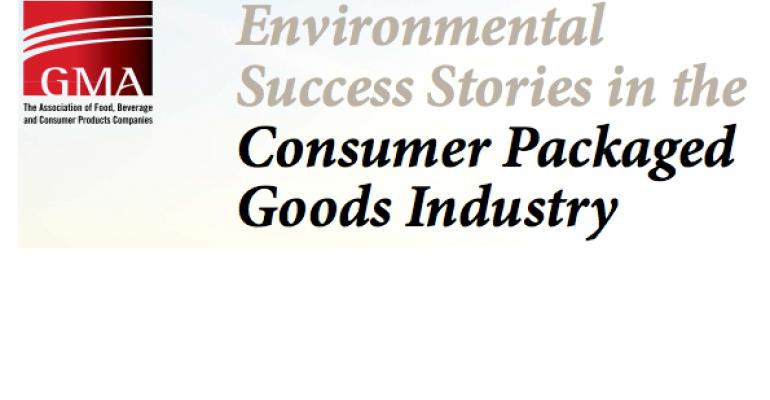The Grocery Manufacturers Association has released a new report highlighting examples of significant strides by Procter & Gamble, Coca-Cola and other companies in managing and reducing waste, more efficiently using water and reducing air emissions.
“Companies are working every day to find innovative ways to reduce their environmental footprint and preserve natural resources while providing consumers with high-quality products,” said Pamela G. Bailey, president and CEO of GMA. “The examples in this report can be a model for others on how companies can deliver on their commitment to sustainability by innovating to reduce their environmental footprint and preserve national resources, changing operations to reduce food waste, save energy or cut water usage.”
The report — Environmental Success Stories in the Consumer Packaged Goods Industry — shows the range of innovation across the CPG industry that both improve operations and benefit consumers and society as a whole.
Examples include:
• A wind farm being built in Texas will enable Procter & Gamble to use 100% wind power to make its fabric and home care products in North America. The 100-megawatt wind farm is expected to be operational this December. Each year, it is projected to eliminate 200,000 metric tons of CO2 emissions and generate 370,000 megawatt-hours, which is enough electricity to wash 1 million loads of laundry.
• Coca-Cola developed a type of plastic made from renewable material from plants, replacing fossil-based ingredients used to make plastic bottles. More than 30 billion of these plant bottles have entered markets in nearly 40 countries since 2009, saving more than 630,000 barrels of oil.
• Nestlé’s investment in a “zero water” milk factory in Modesto, Calif., will not use any local freshwater resources, and instead will extract the water it needs to manufacture dairy products from milk. That investment alone will save some 63 million gallons of water each year.
• A Land O’Lakes facility that packages animal feed identified an innovative way to recycle 95% of the bag trim used in packaging. This facility teamed up with recycling and waste management partners to create a one-of-a-kind sorting system that uses air to sort the materials. This reduced the amount of trash generated at the facility and ensured that materials with recyclable value are kept out of landfills.
• Clorox Co.’s Glad trash bags handle consumer waste — and minimize waste as well. Using new technology, the Glad brand has reduced the amount of plastic in its base trash bags by 6.5 percent. This has resulted 5 million pounds of plastic less than what was needed previously for bags.
The report is the third edition of GMA’s biennial Environmental Success Stories, compiled with the help of with sustainability experts and a leading accounting firm.





